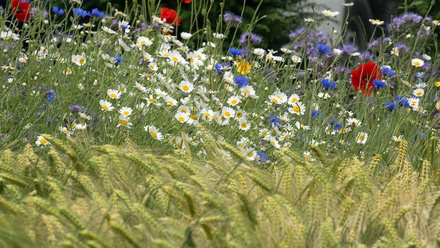ELMs Case Study: St Owens Cross, Herefordshire
Summary
- Family farm
- Cereals, potatoes, sugar beet and maize
- Chicken unit
- AD plant - potatoes go into own
- Crisp manufacturing
- LEAF Accredited
- 20 reservoirs
- Tree planting
- Advisers integral to business
- Currently in Mid-Tier in small way
- Jury out on ELMS
- Looking at carbon capture
- Wants to be left alone to farm productively
Background
This is a mixed family farm is 2,500 acres plus other local rented land takes the total to around 3,500 acres. The business is run by a farmer whose father bought the business back in 1977 and built it up from 80 acres.
Previously the family farmed sheep and cattle alongside sugar beet, which went to British Sugar (which then had a factory at Kidderminster), stubble turnips and Brussels Sprouts.
However, this changed in 2001 with the advent of Foot and Mouth. All the sheep and cattle on the farm went within two months and at this point, the farmer took over the business and introduced chickens, as well as changing the cropping.
The soil is a light, medium loamy sand. He says: “It’s very hungry soil and it does need a lot of inputs, but it is also possible when you get the inputs right, to get a lot of out of it.
"There’s nothing we can’t grow here and it’s highly productive. We get warm winds coming up from the Bristol Channel and that makes it quite an ‘early’ area. We get a lot of fruit and vegetables grown around here.”
Crops
Crops grown include winter wheat, winter oilseed rape, winter barley, potatoes – from earlies to lates for processing – sugar beet and maize. Around a quarter of the farm is given over to potatoes, with cereals occupying around 60 per cent and the remainder devoted to sugar beet and maize.
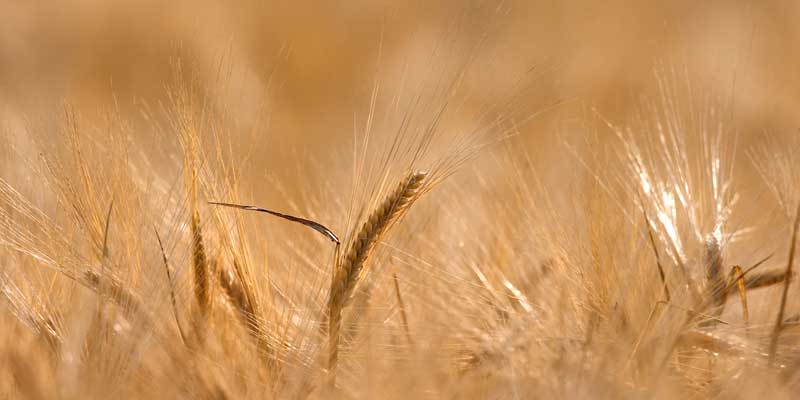
The potatoes go into the business’s own crisp manufacturing plant, which produces crisps in compostable packaging. “It’s hugely important to get the crops in the ground in the autumn,” says the farmer, “Because if you don’t the ground dries out. If that happens you’ve got nothing because we don’t have the
root structure.”
The farm makes extensive use of cover crops and tries to ensure that the vast majority of land has something on it throughout the year. As soon as early potatoes are lifted in July, a cover crop is planted even though it may only be in the ground for two or three months.
There is a 750,000-broiler chicken unit and an anaerobic digestion (AD) plant providing half-a-megawatt to the farm, the crisp manufacturing plant and the grid. They also have 7500-megawatt of biomass boilers which use woodchip and provide heating to the chicken sheds. Solar power is also used on the chicken site and the main farm.
The AD plant takes sugar beet, and maize, as well as the muck from the chicken unit. The fertiliser from the plant is used to grow the maize and the sugar beet as well as going onto the potatoes and oilseed rape. The liquid fertiliser from the AD plant provides a source of nitrogen, while the solid digestate is used as a soil enhancer improving the oil organic matter. They also bring some cattle muck onto the farm.
Cultivation
In terms of cultivation, the farm has considerably reduced the amount that they are moving the soil for planting cereals – reducing from three passes to one. Because the land has to be moved to plant potatoes this means they can reduce the amount of movement for cereal crops.
They have also made extensive changes to reduce the impact of their potato planting, trying to move away from ploughing as much as possible and going over to non-inversion tillage. They have invested in combination planters which plant the potatoes and work the soil at the same time.
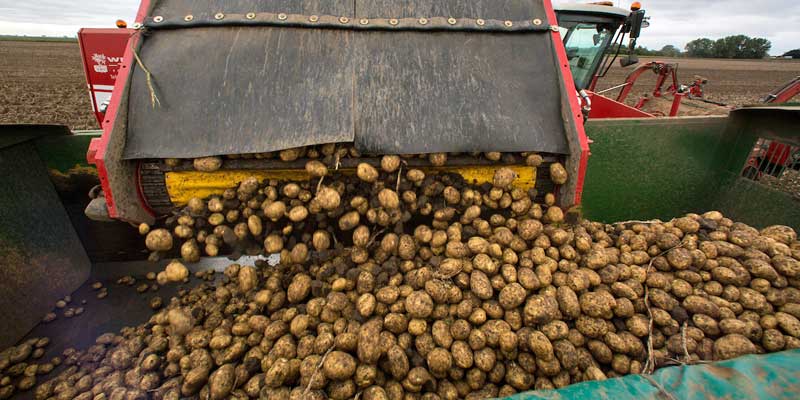
The farm agronomist, who works for a major distributor and trading company, says: “We are using a 50-centimetre row width, so that there will be more rows in a field and we will get more potatoes per acre. We can get away without planting the tramlines and plant these with a short-term pollen-nectar mix.
"As a result it will help with pollinators but also predators for aphids and this helps to reduce our pesticide usage. Potato Cyst Nematode in the soil is an issue on the farm but we are using satellite data and we are only treating where we absolutely need to.
"Also we are growing more potatoes in a smaller area and we can stretch the rotation which will free up land in the long-term.”
The farmer says: “The changes we have made to potato cultivation should increase yields, give us a more even crop, and, most importantly, look after our soil structure. We will absorb more water over a field, have less run-off and less damage to the soil.”
He is also exploring the possibility of more automation in the future. “If you look at tractors,” he says, “A large part of the machine is taken up by the driver. If you can take the driver out, you can reduce the size of the machine and reduce its impact on soil. It all comes back to soil structure and health.”
Role of the advisers and network
The agronomist's role on the farm started when the farmer began to look more closely at the need for greater soil management. The farmer says: “Because we no longer had animals on the farm and were growing a limited rotation of crops, we realised that we needed to do more to put back into the land. Previously it just happened because of the way we farmed.
“We are nothing without the soil, so we had to do something about it. I could see that the soil would sustain the farm for my lifetime but not beyond that. It wasn’t just about the quality but also about erosion and soil structure. In 2010 the adviser came into the business and we also got involved in the company's precision farming service.
“We began to use more cover crops and then we gradually used the service to analyse the soil. We did 300 acres one year and 300 the next, and then we gradually began to get a better understanding of our soils. We have had some setbacks when we had flooding and we had to go back and start again,
but the weather is one thing we can’t do anything about!
“Anything that goes into a spring crop on this farm, has a cover crop put on it. With this type of soil it’s important not to leave it, this soil does not like being left idle. Just putting in masses of set-aside, which is what we were being asked to do at one stage, was absolutely the wrong thing to do and the soil went dead as a result.”
Cover crops
The farmer says that from the early days of his father running the farm they have been practising a form of Integrated Pest Management (IPM), but this has come more to the fore in the last 10 years with cover crops playing a crucial role.
They are increasingly looking at the role of companion crops alongside the main crop as well as for the IPM benefits dual planting can bring. An important part of the farmer's strategy concerns rented land.
He says: “A lot of land locally was being rented out on short-term agreements which meant nothing was being put back in. We took on a lot of land and tried to do longer tenancy agreements so we could treat it like our own land: analyse it and try to improve the organic matter and soil structure.”
Soil sampling is ongoing on the farm and now includes looking at organic matter. He says: “We now have maps going back ten years for phosphorus (P) and potassium (K). We now want to introduce other things including organic matter, and hopefully in the future we will be able to build up the same
type of picture for that.”
The analysis system has enabled the farm to use variable-rate nitrogen (N) applications and also variable-rate seed. This is both more efficient and better for the environment. The farmer says: “We are receiving weekly satellite updates which enable us to optimise our inputs. Particularly at this time of year – February to April – that data is crucial.
"We can see exactly what’s happening. We’re not necessarily using less fertiliser, but we are optimising its use. We have to feed these soils to
make them productive and this ensures we can do it in a balanced way.”
Expert advice
The agronomist provides agronomy on the farm covering cereals, maize, sugar beet and beetroot. He also works as part of the company's subsidiary which specialises in providing cover crops.
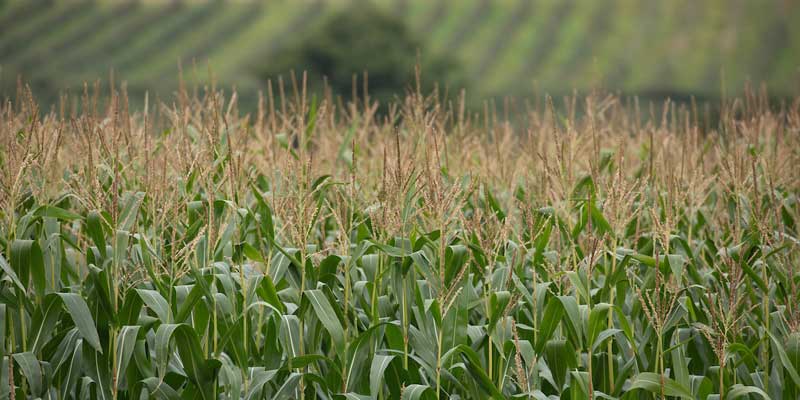
A colleague of his is a specialist potato agronomist and the distributor also provides grain marketing and precision farming advice. Both advisers are BASIS and FACTS qualified.
The main agronomist says: “We are giving Mark advice on critical decisions which involve spending a lot of money such as purchasing a £100,000 drill or changing the potato system.
"We have to make sure we have explored every aspect of the decision in detail and then back that advice up to ensure that we deliver results.”
The farmer says: “The agronomists are part of the team on the farm helping to plan for the future and make the big decisions as well as being involved in the day-to-day running of the business.
"We have also been using the distributor company to advise on the environmental side of the business for around six or seven years. The increasing importance of that aspect of their advice naturally evolved from the work we were doing on soil and nutrient management.
“I don’t have qualifications such as FACTS or BASIS and that’s why I bring these people in – they are the experts.”
Environmental activity
The farm was previously in Entry-Level Stewardship and currently has two Mid-Tier agreements, one covering the eastern part of the farm and the other western part.
One of these agreements is just one year old, while they are three years into the other one. The amount of land in these agreements is around 40 acres and the agreements are AB9 and AB8.
The farm is LEAF-accredited. The farmer says: “There were three main reasons for wanting to become LEAF accredited. It supports the work we are doing with the crisp manufacturing and producing a sustainable product; we had customers who were increasingly interested in it; and partners such as the banks wanted to know what we were doing with our carbon footprint. Demonstrating how we are reducing our carbon footprint, and involvement with schemes like LEAF actually gets us a better deal with the bank.
“LEAF was quite tough, but one of the things that made me go for it, was that it wasn’t a ‘pass’ or ‘fail’. It was a matter of demonstrating what we were doing and then building on that. We are continuously looking at what we can do. We are always planting trees and last year we spent £20,000 on tree planting.”
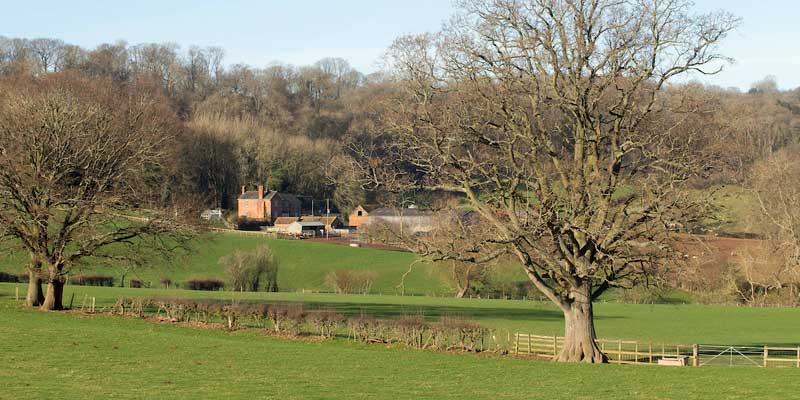
Stewardship
As far as the stewardship schemes are concerned, the farmer says: “I am very reluctant to take productive land out of production and the amount of land in stewardship is tiny compared to the size of the farm.
"However, on the farm, we have 20 reservoirs, all of which have trees planted around them, and we are planning five more. We may get a grant to build these but they don’t come into the stewardship payment system.
“They are taken into account as part of our LEAF habitat accreditation, but the fact that we are extracting water from them, makes them ineligible for stewardship schemes.”
One of the things that the farmer has noticed since they have started to use more cover crops and improve their soil management, is greater water retention. Given the nature of the Herefordshire soil, it means their crops are doing much better during periods of low rainfall.
Attitude towards environmental stewardship and ELMS
One of the key elements of Mark’s attitude towards the environment and environmental schemes is his desire to continue to farm intensively as well as sustainably.
He says: “We’ve got all these schemes out there and some will suit some farms and won’t suit others. Fundamentally for a farm of this size and given the soil types we are on in Herefordshire, a lot of these schemes would stop us being intensive.
“What I’ve always tried to do is to have an environmentally friendly farm, which is still intensive because it won’t survive otherwise. There’s a lot of people working on this farm, and a lot of investment and unless it’s intensive it won’t work. There are huge areas of this farm where we can do things for the
environment, but please don’t stop us from intensively farming on good land because that’s where we produce quality, affordable food.
“In the areas that are less productive on this farm or in other parts of the country, those are the areas to think about turning over to additional environmental uses. Otherwise, you are taking out prime land that needs pushing with fertilisers and chemicals to produce the food we need. We should be using every part of our available productive land.”
The farm's main agronomist says: “What we are looking for in stewardship schemes is flexibility. What we don’t want to do is ‘shoe-horn’ a stewardship scheme into the business.”
Hereford differences
The farmer also points out that the nature of the land in Herefordshire makes it difficult compared to other parts of the country. He says: “When I’m talking to a customer, I have to sell myself over someone in the Eastern Counties that hasn’t got hedgerows.
"They’ve got huge open 50/100-acre fields which are easy to operate. My average size of field is 18 acres, with a hedgerow around that I need to leave two metres around and I have a dry ditch where I have to leave six metres.
“All the farming legislation that comes out hits us really hard because it takes even more land out of production and makes farming very tough. We haven’t got a lot of land left that we can take out of production.”
The business is cautious as far as ELMS is concerned, the agronomist says: “We will be looking to renew our agreements in 2024 to take us to 2029, and by that time we hope that things will be clearer with regards to ELMS and we’ll have a better understanding of it.”
From the farmer's point of view, he sees a greater opportunity for business rewards in carbon capture. He says: “If there is not a great deal in ELMS on carbon capture then we will explore other opportunities with businesses to carry out carbon capture for them. That may be better for us as there would be less red tape and we would be more in control. However, it’s early days yet.
“Fundamentally, I am not going to rush into these schemes unless they stand out and I think ‘I would be mad not to go in’. They need to demonstrate that I’m going to make more money than, say, growing potatoes. The trouble is we need the government to invest in productive farming as well as taking land out of production.”
Potential areas for ELMS
Potential areas that this farm could be involved with in ELMS include:
- Soil management
- Crop management
- Integrated Pest Management
- Fertiliser use
- Efficient water use
- Water storage
- Trees outside woodland




